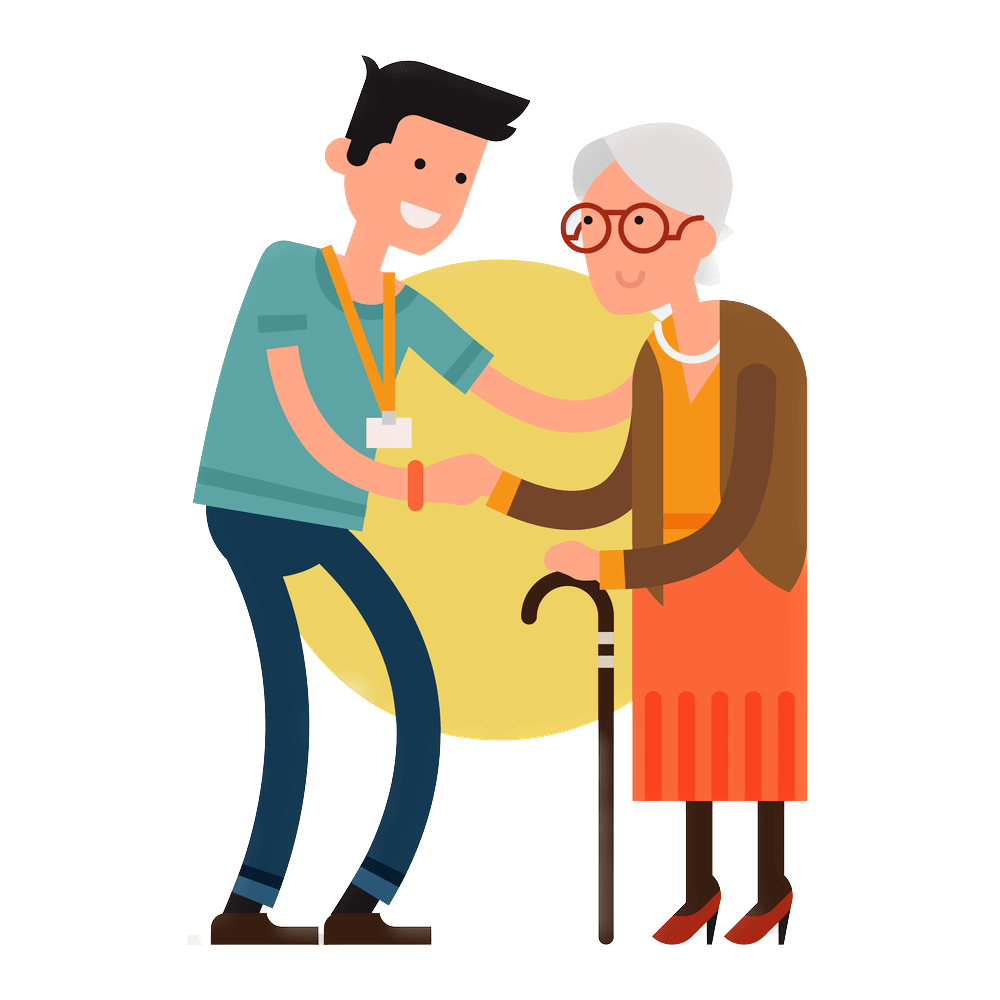Our Hospice Services
Best Hospice Providers, Inc develops an individual plan specifically designed to work for you and your family.
Many families sign up for hospice not knowing exactly what services are included or what to expect. Hospice is not an everyday service or experience, so it can come with a lot of uncertainty.

What Are The 4 Levels of Care?
crisis. That’s why we have a diverse team of experienced professionals to offer a broad range of services.
- Specially trained nurses
- Personalized and compassionate care
- Caregiver education and ease of anxiety
- Assistance with life-limiting illnesses
- Spend the last days, months or years in comfort
- Open lines of communication
- A best plan of care continually updated
- Hospice aides offering personal care services
- Carefully vetted volunteers and companionship
- Attention to your individual bereavement needs
- Temporary inpatient care in a hospital or care facility, when necessary, to treat pain or other acute symptoms, when routine home care or continuous care is not sufficient
- A team member coordinates care with hospital staff
- Aimed at making the patient comfortable then transitioning back to home setting
- Includes daily visits by a team member to ensure services are provided according to hospice plan of care
- Allows for the patient to be placed in an inpatient setting for up to five days to give family/caregiver relief and prevent caregiver fatigue
- Hospice will coordinate care with inpatient team to ensure continuity of care
- One-on-one nurse and nurse aide care provided in the home setting during brief periods of crisis for pain control and acute symptom management
Service Area

Hospice Myths
Frequently Asked Questions
- Hospice is a program not a place.
- Hospice care usually takes place in the comfort of an individual’s home, but can be provided in any environment in which a person lives, including a nursing home, assisted living facility, or residential care facility.
- It provides end-of-life physical, emotional and spiritual care to individuals who have been determined to have a terminal illness.
- Inpatient hospice is for short-term critical care when the patient’s symptoms can no longer be reasonably treated in another setting.
- Treatments such as pain control, medication adjustment, observation, stabilizing treatment and symptom control can be more easily provided in an inpatient facility.
- It’s wise to be a good consumer and research your options.
- The range of support services and programs may vary from state to state depending on state laws and regulations.
- All hospices have core services that they must provide, those services are the four levels of care that must be available:
- Routine Home Care
- Respite Care
- Continuous Care
- Inpatient Care
- All hospices must provide core staff:
- Physician
- Nurses
- Nurse aides
- Social workers
- Chaplain
- and Volunteers
- The difference between hospices is staff experience, longevity of staff, length of time in operation, and the administration of the hospice in meeting the state and federal guidelines that are set forth for hospices to abide by.
- One medium to use when searching for a hospice is the Department of Aging and Disability or DADS. They provide a Website that displays the survey results from the federal and state surveys required of hospices. The surveys provide information on how well the hospice is performing.
- The hospice team, which includes nurses, social workers, home-health aides, volunteers, chaplains and bereavement counselors ? visits patients intermittently and is available 24 hours a day/7 days a week for support and care.
- Hospice does not provide sitters.
- As a part of their core services, hospices should provide ?continuous care,? but the hospice patients must meet certain criteria outlined by Medicare, Medicaid and insurance providers.
- Continuous Home Care is provided during a period of crisis to maintain the individual in the home setting.
- It is not intended to replace the care provided by the caregiver for long periods of time.
- Volunteers are sometimes available to sit with the patient for short periods of time to give the caregiver a break.
Hospice can be utilized with any end-stage organ disease or with end-stage neurological diseases such as:
- Heart Disease
- Lung Disease
- Alzheimer’s
- Kidney Disease
- Liver Disease
- Congestive Heart Failure
- Emphysema
- Any illness for which there is no cure
- The Medicare benefit, and most private insurance, pays for hospice care as long as the patient continues to meet the necessary criteria.
- Patients may come on and off hospice care and re-enroll in hospice care as needed.
- Insurance coverage for hospice is available through Medicare and through Medicaid in 44 states and the District of Columbia, most private insurance plans, HMOs, and other managed-care organizations include hospice care as a benefit.
- In addition, through community contributions, memorial donations, and foundation gifts, many hospices are able to provide patients who lack sufficient payment with free services.
- Other programs charge patients in accordance with their ability to pay.
- The role of the physician is to recommend care, whether hospice or traditional curative care.
- It is the patient’s right, or in some cases the right of the person who holds power of attorney, and decision to determine when hospice is appropriate and which program suits his or her needs.
- Before entering a hospice, however, a physician must certify that a patient has been diagnosed with a terminal illness and has a life expectancy of six months or less.
Physicians
A physician refers a patient to hospice care – For an initial hospice election, both the attending physician and the medical director of our hospice or physician member of the Interdisciplinary Group (IDG) must provide a certification of terminal illness.When a physician refers a patient to hospice, we often see hospices obtaining the certification from referring physician.
Nurses
Hospice nurses are responsible for the initial assessment of the patient to determine eligibility in collaboration with the patient’s PCP (if any) and/or hospice physician and establish the initial plan of care. Hospice nurses ensure that even with a terminal disease, patients still have the integrity and the feeling that they’re still in control.
Hospice Aides
Hospice Aides provide hands-on personal care such as bathing, dressing, eating, assistance with ambulation exercises, assistance with self- administered medications, and performing simple procedures as an extension of therapy or nursing services.
Social Workers
Hospice Social Workers advocate for each patient’s end-of-life wishes and help individuals address the emotional aspects of late-stage illnesses. Hospice social workers also assist families in identifying other available local services and resources for additional support.
Therapists
We provide Physical, speech and occupational therapists as needed.
Volunteers
Volunteers perform many important duties. Whether providing companionship in a patient’s home, greeting guests at an inpatient center, assisting with a special event, helping with transportation or handling other meaningful tasks — they play a vital role to fully meet the community’s needs.
Hospice Chaplains / Bereavement Counselors
Hospice chaplains are a bastion of comfort and spiritual strength for patients, families, and caregivers on the end-of-life journey.” They help ensure that no patient dies alone & they improve a patient’s sense of overall comfort and well-being. They also encourage a positive and constructive flow of communication between each hospice team and provide help with emotional needs.
Dietician
Dietitians perform nutritional assessments to determine nutrition risk of for clients, and develop a individualized plan of care for their diet as needed.

Counties We Serve
- Santa Clara
- San Mateo
- Alameda
- San Francisco
- Marin
- Napa
- Sonoma
- Contra Costa
- Solano
- Sacramento
- San Joaquin
- San Benito
- Santa Cruz
- Monterey
Being There For Those
Who Need Us Most
Giving them the best that there is , Your elders are our Family , They are in best hands.
